| Fairey Swordfish Mk.1 |
Tamiya 1/48
The first thing that comes to my mind thinking about this kit is its price. Yes, the kit is expensive and this played an important role for me when trying to decide wheter to build it as "the next one" or not. Well, what I can say now is that this project is NOT a particularly difficult one and you can afford it even if it’s your first biplane, as Tamiya has really done an excellent job. The parts are perfectly cast and fit very well, the sub-assemblies go together with a "click" and don’t even need filler. The only parts of the airframe who needed some filler were the fuselage halves, both to fill some extractor pin marks on the inner sides and to get a perfect seamless joint.
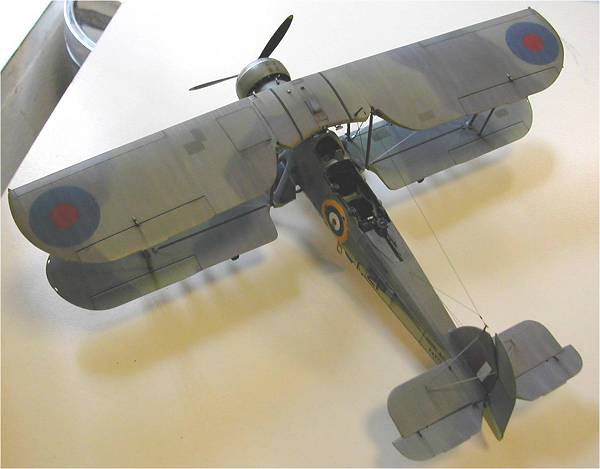
The instructions are perfect except for the paint schemes, I found more accurate directions on the web via several kind modellers and excellent modelling sites. Apart from that, follow what Tamiya says and you’ll get no surprises! Even the detail painting directions seem accurate and should be followed. For this kit I decided to use the separately sold photoetched set.
Construction started from the cockpit where I added some photoetched seat belts, that was the only addition in this area. With a good reference material at hand the experienced modeller will be able to add even more detail, I think Tamiha has done its best and elected not to add further bits. Some parts were painted before assembling, you should keep in mind that several parts and even sub-assemblies will be impossible or difficult to reach after assembling, so study carefully the instructione and decide your own sequence. I will point out some details further. The cockpit’s tubular structure was primed with Aeromaster UK Interior Green, drybrushed with a lighter shade, all the other details were painted/added then the entire assembly received a wash of burnt umber oil. After about 72 hours I sprayed a coat of Aeromaster matt clear.

The control panel was assembled and painted just as described in the instructions and looks very nice, really not asking a replacement from aftermarket producers
 |
 |
The inner sidewalls needed some filling and sanding because of a number of clearly visible extractor pin marks, then everything was dealt as for the parts mentioned before. Remember to open up the holes for rigging before closing the fuselage halves!
I decided to cut the horizontal rudders from the stabilizers and used some sheet styrene and copper wire to recreate the hinges detail. The rudder’s insertion tab was partially cut on one side and bent, thus enabling an off-center position.
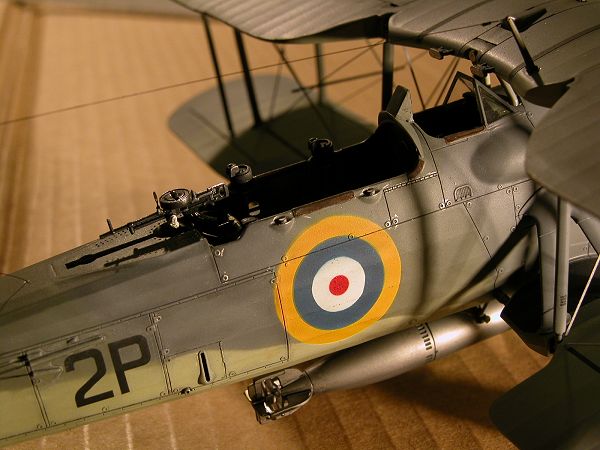
Here the assembling/painting dance begins: if you follow the instructions you may find some areas to be very difficult to be painted, so you may wish to scramble the sequence a bit. For example, the two walkways on the lower wings must be painted before you install the supports (parts n°A11-A12), so the lower side of the stabilizers (before their supports – part n°D38), the main wing support (pars A18-A19-A23). In my opinion even the upper surface of lower wing and lower surface of upper wing should be painted before installing any other part. This obviously means that filling and sanding the joints will be more difficult at a second time, with even the rigging in place. By the way, I had some troubles with the rigging, but I suppose this depends on an assembling error or inaccuracy somewhere, I had to cut some braces and reposition them in order to get a straight line.

The engine was assembled, painted matt black and drybrushed with silver; the oil cooler stood a different process, painted in silver and washed with black oil. The cowling was painted with several shades of metallic paint, then "smoked" and "heated" with a few transparent coats of black and blue.

After a pre-shading coat all the undersurfaces were painted Aeromaster Sky, then let to dry and masked. Next came an "oriented" Aeromaster Slate Grey coat, not covering the areas where the Ocean Gray will later go. Once dry, some paper masks were cut following the 1/48 drawings included in the box and applied to the model. Aeromaster Ocean Grey was sprayed following the camouflage pattern. The lower wings were sprayed a lighter shade of the colors, like on the real Swordfish.
All of the roundels and national insignas were masked and painted, using Gunze Acrylics. Some rectangular spots on the fabric covered surfaces were repainted with a different shade of the base colour to simulate patches.

After a long curing time, all the plane was drybrushed with lighter shades of the base colour, then covered with Future and let to dry another 48 hours. An overall but careful wash of dark oils brought the panel lines and other details out. Really a nice effect.
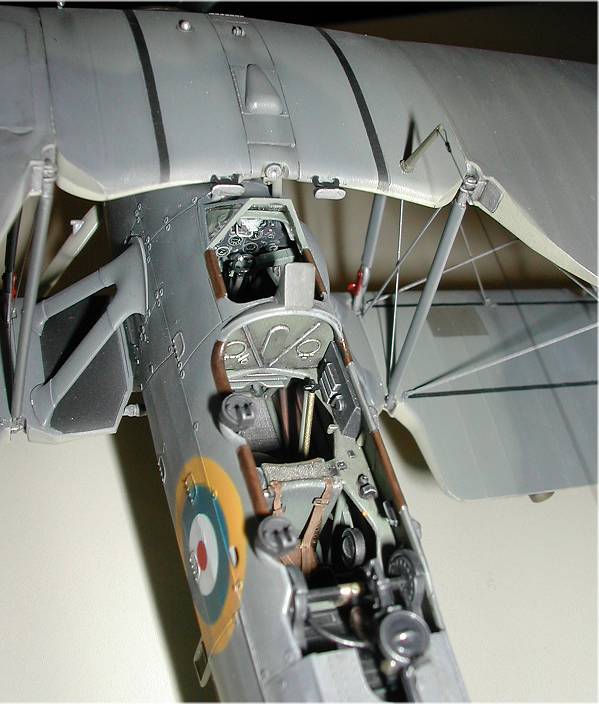
At this stage the project always seems to be near its end, but the experienced modeller knows he is only half-way, as a number of tiny details has to be completed, added, painted, refined, retouched… Maybe you are at LESS than half way, aren’t you?
Surely Lt Beale wasn’t carrying all those things tied under his Swordfish the night he took off the deck in search of the Bismarck, but I could not resist and decided to mount torpedo, bombs, flares and smoke floats. What a mess! The torpedo was painted several different shades of metal using Model Masters buffing metalizers, then overcoated with some layers of transparent acrylic paint and finally with a matt clear coat.
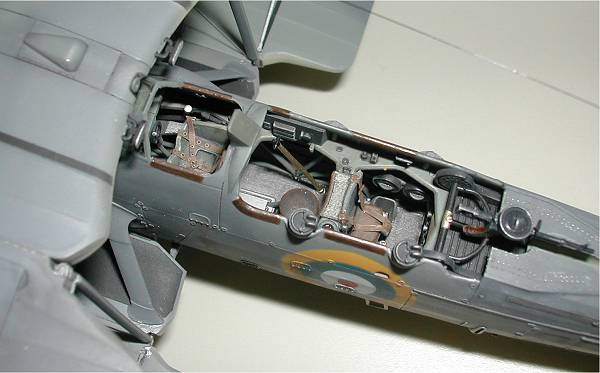
The tyres were flattened on an iron, a paint chipping was performed on the propeller and on some rivets here and there, then it was time to cut some lengths of fishing line to represent the wire antenna and the tail control surfaces’ cables.
This model took about 90 hours to be completed, I enjoyed it from beginning to end and can recommend it to all average-experienced modellers.
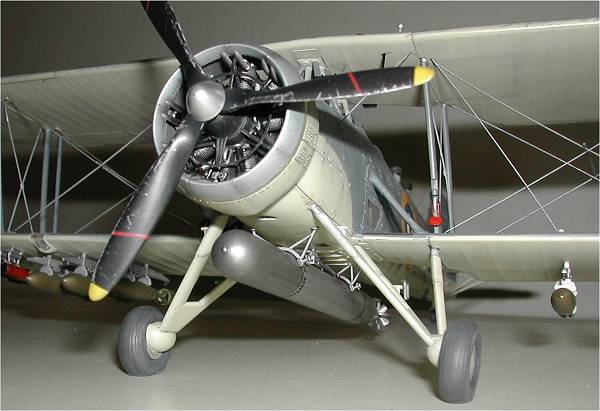
I wish to thank my friend Massimo Ginesi for the kind help with most of the pictures.